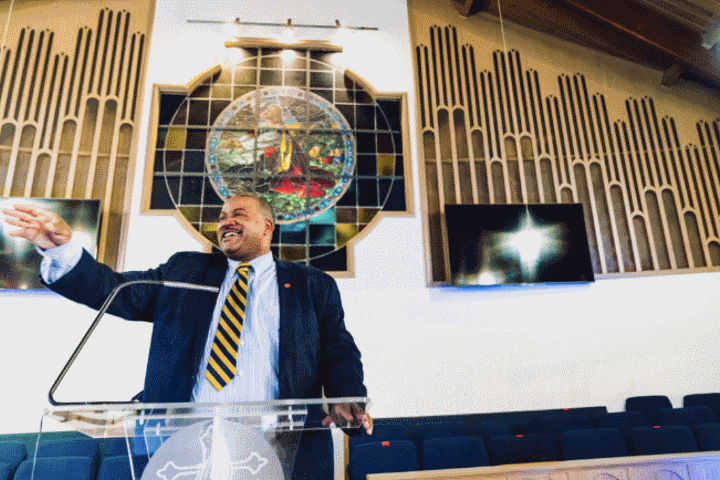
As pastor of the New Northside Missionary Baptist Church in St. Louis, the Rev. Rodrick Burton has championed many causes for his church members. These include fighting violent crime to helping people struggling to pay their bills. But one cause stands out for the north St. Louis pastor: promoting clean and affordable renewable energy. Low-income communities and communities of color are disproportionately harmed by air pollution from burning fossil fuels and by the health risks of climate change.
As someone with family members who suffer from asthma, Rev. Burton long considered the advantages of solar energy, which does not produce air pollution or greenhouse gases. Six years ago, he took advantage of a state subsidy program that allowed him to install solar panels on his church and community center, which he says saves his congregation $3,000 a year in utility bills. That’s when Rev. Burton really got religion about solar energy.
“Let me be clear — climate change is a civil rights issue,” Rev. Burton wrote in an op-ed at the time. “ Low-income communities and communities of color — like the one I serve — are disproportionately harmed by the air pollution from coal-fired power plants, as well as by the heat and health risks due to climate change.”
He joined with environmental groups such as the Sierra Club that wanted to help share his message with a national audience, and he traveled to energy conferences around the country. In 2019, he hosted a summit in St. Louis along with other leaders from the Green the Churchmovement, a national organization of church leaders focused on environmental justice concerns. Groups like Washington University’s sustainability program helped support the conference. Rev. Burton began thinking up even bigger projects, ones that could provide jobs for his congregants and potentially transform abandoned areas of the city.
While solar installations in disadvantaged urban areas of St. Louis are still rare, across the Mississippi River in Illinois, solar is booming thanks to more supportive energy policies, according to solar installers. Last year, the EPA reached a consent decree in a major Superfund case in East St. Louis that included the construction of solar panels on contaminated property.
“St. Louis has many vacant properties,” Rev. Burton says. “We could make whole areas into solar farms. … Who wants to live next to an abandoned building? We could repurpose the land to create more sustainability projects.”
To finish reading the article on AAAS How We Respond website go to this link